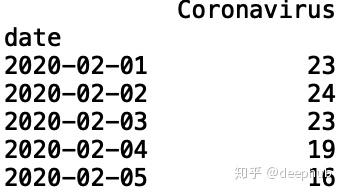

> interest_over_time_df.iloc # Give me row 4, value 0 > interest_over_time_df.iloc # Give me row 4 You can ignore isPartial for now: that field lets you know if the data point is complete for that particular date.Īt this point you can select data by column, by columns + index, etc.: > interest_over_time_df You'll see an index column date on the left, as well as the four data columns apples, oranges, bananas, and isPartial. If you run print(interest_over_time_df) you will see something like this: apples oranges bananas isPartial Let's take this following bit of code, for example: kw_list = Pytrends returns pandas.DataFrame objects, and there are a number of ways to go about indexing and selecting data. Interest_over_time_df = pytrend.interest_over_time() Pytrend.build_payload(kw_list, cat=0, timeframe='today 3-m',geo='',gprop='') Only needed for interest_over_time(), interest_by_region() & related_queries()
PYTRENDS PLUS
#Initialize search term list including comparator_string as the first item, plus 4 search terms Pytrends is a very helpful tool for individuals who want to use Google Trends for discovering user interests and similar tasks. Anyone can use Pytrends via different platforms by installing python. Print("comparator: ",comparator_string,"\n") Even though Google trends uses Pytrends to generate reports in CSV format, there are steps you can take for completing coding tasks. Only need to run this once, the rest of requests will use the same session.Ĭomparator_string = data + " opening"

When changing the timezones, it does not change the timestamp in the output. It feels really dumb, but I just can't figure this out, nor can I find anything online. Pytrends timezone (tz) I´m strugeling a bit with Pytrends, specifically the TZ. I found elsewhere a suggestion to use iloc, but that doesn't return anything for what's shown, and if I pass only one parameter it seems to display everything. I have the data, I can see it, but I can't seem to isolate an element to be able to do anything meaningful with it. The problem I'm having right now is I can't seem to isolate an individual element returned. I'm trying to compare 5 search terms and store the sum in a CSV.
PYTRENDS FREE
Anyways,įeel free to create your own scripts on how you use pytrend or how can it be used in order to improve its features.So I'm new to python and ran into a problem using pytrends. show ()įurther usage insights can be found on the docs. xticks () labels = for position in locs : labels. index, alpha = 0.2, color = 'red' ) locs, _ = plt. index, y = df = label ], color = 'red' ) ax. index, alpha = 0.2, color = 'green' ) labels = df. index, y = df = label ], color = 'green' ) ax. figure ( figsize = ( 20, 10 )) ax = sns. identify_all_trends ( stock = 'AAPl', from_date = '', to_date = '', window_size = 5, identify = 'both' ) df.

import pytrend import matplotlib.pyplot as plt import seaborn as sns sns. OHLC values, in new columns called Up Trend and Down Trend which will be labeled as specified, with lettersįrom A to Z by default. Length than 5 days will be identified as a down trend and so on added to a pandas.DataFrame which already contains With a time window above 5 days, which, for example, implies that every bearish (decreasing) trend with a longer In the example presented below, the identify_all_trends function will be used to detect every bearish/bullish trend
PYTRENDS INSTALL
Or just install the current release or a specific release version such as: $ python -m pip install pytrend=0.3Īs pytrend is intended to be combined with investpy, the main functionality is toĭetect trends on stock time series data so to analyse the market and which behaviour does it have In order to get this package working you will need to install it using pip by typing on the terminal: $ python -m pip install pytrend -upgrade Int64 or float64 values, even though it is intended to be used with stock data it can also be used for any Has been created to support Yahoo Finance features when it comes to data retrievalįrom different financial products such as stocks, funds or ETFs and it is intended to be combined with it,īut also with every pandas.DataFrame, formatted as OHLC.Īnyways, pytrend can also be used to identify trends from any pandas.DataFrame which contains any column with Pytrend is a Python package to detect trends on the market so to analyze its behaviour. Pytrend - Trend detection on stock time series data


 0 kommentar(er)
0 kommentar(er)
